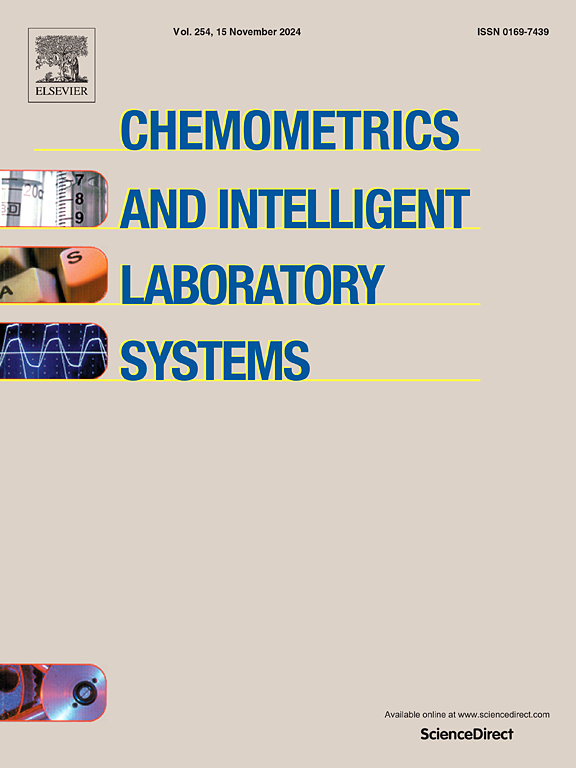基于Adam优化算法的非规则三元混合纳米流体翅形流动的深度学习传热预测
IF 3.8
2区 化学
Q2 AUTOMATION & CONTROL SYSTEMS
Chemometrics and Intelligent Laboratory Systems
Pub Date : 2025-07-18
DOI:10.1016/j.chemolab.2025.105489
引用次数: 0
摘要
纳米流体增强的热和传热特性激起了几位研究人员的好奇心。最近,不同形状的三元纳米颗粒被组合在一起,产生了一种独特的纳米流体,具有出色的热特性;本研究考察了三元混合纳米流体的流动动力学,以及辐射、环境温度和自然对流传热对矩形、凸形和三角形多孔翅片瞬态热性能的影响。利用Darcy模型,本研究创建了一个热传递方程,在评估热性能时,三角形翅片暴露、凸形和矩形是考虑的三种情况。利用Maple 2024版程序中的PDSolve,利用有限差分技术对变换后的无量纲偏方程进行了求解。采用Adam算法的深度神经网络(LSTM)能够准确地预测换热速率。通过MATLAB软件验证了本研究模型的准确性。该研究产生了突破性的发现,即当三元混合纳米流体存在时,鳍的效率会提高。在潮湿条件下,比较了三种不同形式的翅片。与凸翅片和三角形翅片相比,矩形翅片的辐射传热、热几何传热和对流传热特性具有更多的热量,分析结论对工业过程中的强化传热具有重要影响。本文章由计算机程序翻译,如有差异,请以英文原文为准。
Deep learning-driven heat transfer prediction in irregular ternary hybrid nanofluid flow over fin geometries via the Adam optimization algorithm
Nanofluids' enhanced thermal and heat transmission qualities have piqued the curiosity of several researchers. Recently, ternary nanoparticles of different shapes have been combined to generate a unique nanofluid with outstanding thermal characteristics; This work examines the Ternary hybrid nanofluid flow dynamics and the effects of radiation, ambient temperature, and natural convection heat transfer on the transient thermal performance of a porous fin that is rectangular, convex, and triangular, Using Darcy's model, this study creates a heat transport equation, Triangular fin exposed, convex, and rectangular are the three case styles considered while assessing thermal performance. Through the use of PDSolve in the Maple 2024 version program using the finite difference technique, the transformed dimensionless partial equations are solved. Deep Neural Network (LSTM with Adam algorithm) was able to predict the heat transfer rate accurately. By using MATLAB software, the present study model represents the accuracy. The study produced groundbreaking findings that the fins' efficiency is increased when a ternary hybrid nanofluid is present. In wet conditions, three fins of different forms have been compared. Compared to convex and triangular fins, the radiative, thermo-geometric, and convective transfer characteristics have more heat in rectangular geometries, The analysis's conclusions greatly impact enhancing heat transmission in industrial processes.
求助全文
通过发布文献求助,成功后即可免费获取论文全文。
去求助
来源期刊
CiteScore
7.50
自引率
7.70%
发文量
169
审稿时长
3.4 months
期刊介绍:
Chemometrics and Intelligent Laboratory Systems publishes original research papers, short communications, reviews, tutorials and Original Software Publications reporting on development of novel statistical, mathematical, or computer techniques in Chemistry and related disciplines.
Chemometrics is the chemical discipline that uses mathematical and statistical methods to design or select optimal procedures and experiments, and to provide maximum chemical information by analysing chemical data.
The journal deals with the following topics:
1) Development of new statistical, mathematical and chemometrical methods for Chemistry and related fields (Environmental Chemistry, Biochemistry, Toxicology, System Biology, -Omics, etc.)
2) Novel applications of chemometrics to all branches of Chemistry and related fields (typical domains of interest are: process data analysis, experimental design, data mining, signal processing, supervised modelling, decision making, robust statistics, mixture analysis, multivariate calibration etc.) Routine applications of established chemometrical techniques will not be considered.
3) Development of new software that provides novel tools or truly advances the use of chemometrical methods.
4) Well characterized data sets to test performance for the new methods and software.
The journal complies with International Committee of Medical Journal Editors'' Uniform requirements for manuscripts.

 求助内容:
求助内容: 应助结果提醒方式:
应助结果提醒方式:


